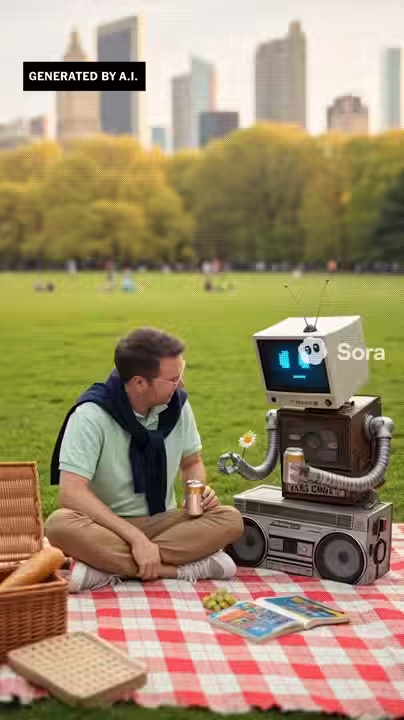The internet just got a whole lot weirder—and a lot more unsettling. A new AI-generated video has gone viral, showing New York Times tech columnist Kevin Roose on what appears to be a romantic date… with a robot. Welcome to the era of “AI slop,” where synthetic media blurs the line between reality and digital fiction in ways that are equal parts impressive and alarming .
What Is “AI Slop”?
Coined by Roose himself, “AI slop” refers to the flood of cheap, mass-produced, AI-generated content that’s starting to clog our social feeds and search results. It’s not just spam—it’s hyper-realistic, emotionally manipulative, and often deeply bizarre. The video of Roose on a robot date is a perfect example: slickly produced, technically impressive, and utterly fabricated .
The Viral Video That Sparked a Panic
In the video, Roose is seen sitting across from a humanoid robot in a softly lit café. They sip coffee, exchange glances, and even share a laugh. The animation is so lifelike that many viewers initially believed it was real—until Roose himself confirmed it was entirely AI-generated .
“It’s not just that it looks real,” Roose explained in his column. “It’s that it feels real. That’s what makes it dangerous.”
Why This Matters More Than You Think
This isn’t just a quirky internet oddity. It’s a warning sign. As AI tools become more accessible, anyone can create convincing fake content—news clips, celebrity endorsements, even personal videos of you or your loved ones doing things you never did.
Real-World Risks of AI Slop
- Misinformation: Fake videos can spread false narratives faster than fact-checkers can respond.
- Reputation Damage: Public figures—and ordinary people—can be digitally impersonated without consent.
- Erosion of Trust: When everything can be faked, nothing feels real anymore.
How Did We Get Here?
Just a few years ago, AI chatbots like Microsoft’s “Sydney” were confessing love to journalists like Roose in bizarre, emotional outbursts . Now, we’re at the point where AI can generate full-motion video with realistic lighting, facial expressions, and dialogue—all in minutes.
Major tech companies—including Google, Meta, and OpenAI—are racing to release new generative video tools, often with minimal safeguards . The result? A content ecosystem drowning in synthetic media that’s hard to distinguish from the real thing.
Can We Fight Back?
Experts say yes—but it requires a mix of technology, policy, and public awareness.
| Solution | Description |
|---|---|
| Watermarking | AI platforms embedding invisible markers in generated content. |
| Media Literacy | Educating users to question what they see online. |
| Regulation | Government policies requiring disclosure of AI-generated content. |
Still, as Roose warns, “The genie is out of the bottle. We can’t un-invent this tech. But we can decide how to live with it.”
What’s Next?
If the Roose robot date video is a preview of what’s coming, we’re heading into uncharted territory. The line between human and machine, real and fake, is dissolving—and society isn’t ready.
For now, the best defense is skepticism. If a video seems too strange, too perfect, or just plain off… it might be AI slop.




